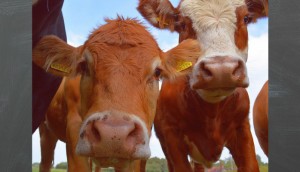Why Attractive People Are Happier and Economically Better-Off
Attractive people have been found to be happier than ‘not-so-good-looking’ people. Better-looking men receive higher incomes, which makes them happier overall. Attractive women are also happier, but their happiness is more direct in that their happiness is the result of knowing that they are good-looking. Attractive women do receive higher incomes but this is not a direct link to their happiness as it is for men. I interview Dan Hamermesh on the Economic Rockstar podcast about the Economics of Beauty. Dan is Professor in Economics at the Royal Holloway University of London and at the University of Texas at Austin and author of Beauty Pays: Why Attractive People Are More Successful.
“The beauty itself is directly more salient to them [women] than it was for men, even though the overall effect was identical for both genders” – Dan Hamermesh.
How someone realises if they are attractive or not is due to the reinforcement by other people in making you aware whether you are good-looking or ugly. “Better-looking babies are treated better by their parents and by other people. Better-looking 5 year olds are treated better in kindergarten than ugly ones. When you’re chosen for teams or go out in High School, the better-looking people do better. And, given even the amount of education they attained, they’ll do better in the labor market. They’ll get better jobs, make higher pay, even within the same occupation.” Good-looking attorneys, prostitutes, politicians and National Football League quarter-backs make higher pay than their uglier colleagues.
In the labor market, the top one-third of people who are considered good-looking will earn 10 to 12% more in income independent of any differences that might exist between them and those not considered good-looking.
A woman’s increased spending on cosmetics, hair and clothing will not increase her perceived beauty and will also have a minimal pay-off on the labor market for her. Plastic surgery for cosmetic reasons does not have a benefit in terms of increasing earnings in the labor market. You do it to feel good. It’s not an economic investment, it’s a feel-good investment.
Does Location Determine Whether You Are Beautiful or Ugly?
I ask Dan whether a person’s good looks are determined by the area in which they live. The reason I ask this is based on our earlier discussion on why attractive people typically earn a higher income. It can be fair to suggest that cities or regions that pay more would consequently attract good-looking people due, perhaps, to the opportunities that exist (think of Hollywood!).
Dan states that “if you’re a good-looking person, you’re going to flock to an area where your looks pay off more. And if you’re a bad-looking person, you might want to go away from an area where looks pay off.” Findings from research carried out by Professor Hamermesh suggested this to be case within the UK. People who were born in Scotland and Wales, if they’re good-looking, are more likely to migrate to South-East England (London) than other people. Also, those born in South-East England (London) who are bad-looking appear to move to outlying areas where their looks aren’t so important.
“Looks not only affects where we live in terms of what we make, but where we choose to live in terms of where we spend our adult lives. You’ll go where you get the biggest bang for your buck or, in this case, the biggest pounds for your beauty.”
Economic Markets Where Beauty and Attractiveness Are Present:
1.Labor Markets: Higher wages and better conditions.
2.Marriage Markets: A good-looking woman will attract a man who earns more.
3.Market on Unsecured Loans: Attractive people are more likely to get a loan and on better terms
The Impact of Negative Externalities from the Meat Industry
There are major environmental costs associated with producing animal products. They include damage to soil, air-borne pesticides, pollution to eco-systems, health risks, deforestation, climate change and diminution in real estate values. For example, properties that are located near factory farms experience a fall in value.
In episode 34 of the Economic Rockstar podcast, David Simon, author of ‘Meatonomics’, explains how the meat and dairy industry imposes negative externalities on society.
Various studies have shown the impact animal production has on climate change, with some reporting that it is responsible for up to 51% or as low as 14%. In the US alone, David has calculated that the environmental external costs of animal food production are about $37 billion. Who pays these costs? The farming community? No. These costs have been externalised and society ends up paying for the damage being caused by the industry.
However, David suggests that the payment of these costs are being delayed. It’s a deferred cost that is recognised in conventional economics but it’s something that will come back to ‘bite us on the nose’. For example the climate change mitigating cost is about $9 billion in the US but it is not being tackled right now. Because we’re not dealing with costs today, we’re allowing climate change to proceed along a path that will end up costing us a lot more in the future.
With the boom in farming and the ever increasing supply of meat products to cater for the demand, carbon emissions have soared. The cow population has grown exponentially as new markets have opened up in developing economies. Diets, such as the paleo diet, has added to this demand. The methane gas emitted from cattle is an astonishingly large contributor to green house gases. This, along with the associated transportation costs required to ferry these animals by land and sea, has led to a larger carbon footprint per animal. Carbon dioxide emissions also increases with the transportation of these animals.
“If we were to reduce our consumption of animal foods by say 40% to 45%, that would have the same effect on the emissions that drive climate change as if we were to garage all of our motor vehicles and motor vessels during the entire time that that reduction in consumption is in effect” – David Simon.
Negative externalities affect every living thing on the planet – humans, fish, flora, local fauna, primates, etc. You can be vegan or a herbivore, but there is no way that you can avoid these costs. Reports have indicated that pesticides are airborne, which can be harmful to your health. Our water table, our rivers and our oceans are being polluted by the slurry and manure that is being washed or dumped into these rivers. Fish are being affected with dead-zones appearing in our oceans, resulting in life being unsupported. Plant-life, insect species and exotic animals are being displaced due to the landscape of the Amazon rainforest being forever altered to cater for cattle grazing.
These are costs borne on our society. Much of the harm being done is irreversible. However, it can be stopped and further mistakes prevented if effective measures are introduced. Human diseases, such as MRSA, originates in livestock and spreads through the distribution of animal foods and, because of the antibiotic use in livestock, people are challenged to find antibiotics that can actually resist that disease.
Everyone is affected by current farming practices. For every $1 of animal foods sold at retail, there’s another $1.70 in externalised costs that is imposed on society. For example, for every $5 Big Mac sold by McDonalds, there’s another $8 imposed on every single person. These costs, which if absorbed by the producer, would result in higher retail prices for the consumer. To overcome these potentially high market prices, governments subsidise the meat industry. In the US alone, the government heavily subsidises the meat industry to the tune of $38 billion payments each year. At the moment, the fruit and vegetable industry in the US is being subsidised with only about $17 million. That’s a difference of circa $37.83 billion!
Counter-arguments by those suggesting that if these subsidies were removed from the meat industry, then higher prices would occur, followed by mass lay-offs and higher levels of unemployment. This outcome would occur due to consumers reducing their demand for animal products and getting their protein from different sources or substitutes. In this episode of Economic Rockstar, David foresees that if this were to occur, people would naturally transition toward a plant-based diet as a source for their protein. Consequently, plant-based agriculture would be then in a position to hire more workers and the numbers of lost jobs in the meat industry would be off-set by the levels of employment in the plant-based industry.
The externalities outlined above are by no means localised. This has become a widespread phenomenon in so far as it becoming a global concern. 90% of the planets’ rainforests have been removed, and flattened, with much of it being replaced with grazing pastures for cattle. David revealed a startling statistic of 3 acres per minute of rainforest being destroyed with 2 of these acres being dedicated to providing grazing land for beef cattle or for growing feed crops like soy or corn to feed beef cattle.
How ironic it is that the very trees that contribute to the natural process of cleaning the air by absorbing carbon dioxide and producing oxygen is being overwhelmed by the amount of emissions from cattle and the farming industry. The ratio of trees to emissions is falling at an astonishing rate due to the destruction of these rainforests.
Calculation of the Least Square Regression Line:
Here I show you how to calculate the least squares regression line y=a+bx using the variables GDP per capita and life expectancy.
Check out the introductory videos on creating a scattergraph and the regression equation using excel:
In each video, I take you through 4 examples and explain the meaning of the dependent and independent variables. I also interpret the meaning of the resulting regression equation as well as the coefficient of determination and the correlation coefficient.
►Simple Linear Regression Part 1
►Simple Linear Regression Part 2
►Simple Linear Regression Part 3
►Simple Linear Regression Part 4
===================================================
Why not check out the Economic Rockstar podcast on iTunes which you can also subscribe to here:
Be a Rockstar and Subscribe. I appreciate it!
►http://www.economicrockstar.com/giveaway
►https://www.facebook.com/EconomicRockstar
►https://twitter.com/Econ_Rockstar
►https://plus.google.com/+FrankConwayEconomicRockstar/posts


